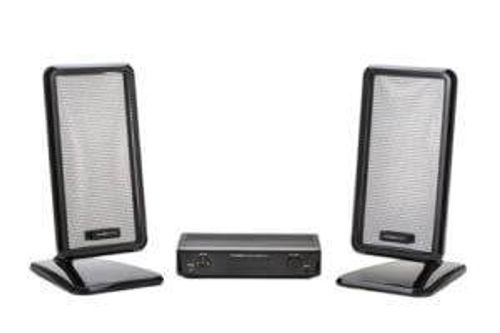How People With Hearing Loss Can Hear TV Better
This tech writer calls Hypersound Clear 500P 'revolutionary'
(This article previously appeared on Tech50plus.com. Please also see Next Avenue's Hearing Loss Guide.)
One of the first things you notice when you start losing your hearing is that conversations on your television programs start sounding muffled. You often need to turn up the volume, making television viewing a less comfortable experience for anyone else in the room with you.
Here’s a pretty good analogy: Imagine trying to read a book but every third or fourth word was erased? That’s what it’s like trying to hear television dialogue, so you constantly ask those around you, “What did he say?”
Hearing Loss: A Problem for One In Three Over 65
It’s annoying, frustrating and all too common. Researchers estimate that one in five Americans, and one in three people over 65, suffer from hearing loss, the third most common chronic physical condition in the United States.
Hypersound to the rescue. I’ve been covering technology long enough that I don’t use the phrase “revolutionary” lightly. But the technology from the HyperSound division of Turtle Beach — known as HyperSound Clear 500P — truly is revolutionary, with broad implications for sound reproduction.
“With nearly 50 million people in the U.S. and 360 million people around the world with hearing loss, and approximately 80 percent of patients specifically telling their hearing health care providers they’re having trouble hearing and understanding the TV, we know there’s a significant audience of people who can benefit from adding HyperSound Clear into their home entertainment setup,” says Turtle Beach executive Rodney Schutt.
A Singular Purpose
The HyperSound Clear 500P has only one purpose — to enable someone to hear what’s on television without disturbing anyone else. To enable this, the system uses two major components, a digital processor and two emitters.

The digital processor does some technological magic to separate out the high end of the audio coming out of the television. It is then beamed out of the emitters. They are not speakers in the traditional sense. Instead of sending out a cone of dispersed sound, each emitter sends out a narrow beam. Think of it as a flashlight beam for sound. At the point where the beams converge, the high end of the audio spectrum is reproduced. But the effect, which is more like 3D immersion in headphones rather than point source from speakers, only works in that one focused space.
Lining up the emitters in just the right manner to only reach the targeted listener is easy. The emitters look like reflectors. If you sit in the right position, you can see your own reflection in the front of each emitter. That tells you that you’re in exactly the right spot. Even a foot or so away from that sweet spot and you lose the immersive effect.
While you get the highs from HyperSound Clear, you’ll still get the rest of the audio spectrum from the television’s speakers or whatever home theater system you might use. The system does not detract from the listening pleasure of anyone else in the room, since it’s barely audible to anyone outside of the “sweet spot.”
How to Use It
I found the system really easy to set up. It comes with both RCA plugs and an optical cable. The RCA plugs come with “Y” splitters, so you can still cable up other headphones or an analog sound system. If your television or set top box has an optical (digital) output, you’re likely to get better sound quality. The emitters can sit on your entertainment center console, though they also come with extension poles to make them into floor standing units.
HyperSound Clear is also making an add-on that helps people with tinnitus, that annoying ringing in the ears. And the technology has broader applications for eventually beaming full-range audio. One challenge is how to deal with couples who both suffer hearing loss, as is the case in my household. For now you’d need two sets of emitters, though company says it is working on a solution.
For now, the product is only available through hearing care providers, including some big-name companies. It carries a suggested retail price of $1,675, which is pretty steep, but a lot cheaper than many prescribed hearing aids.
And it works. In a few short days it has dramatically improved my television watching experience. All technology should work this well.

